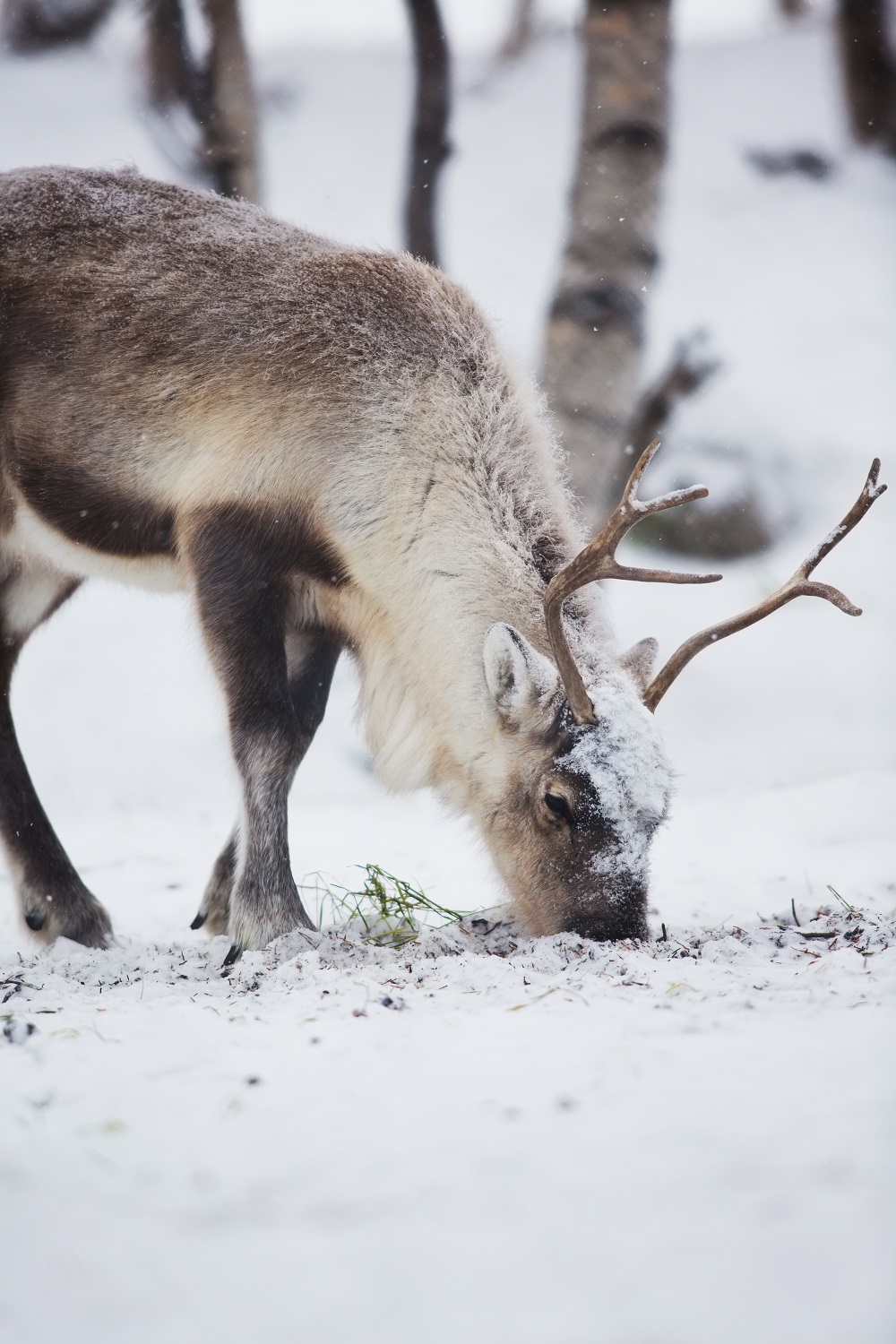Reindeer
Since the early Stone Age, humans followed migrating reindeer for their hide to make clothes, and as a source of food. Reindeer milk and products derived therefrom were a major component of the Sami diet until the 20th century. Today’s modern livestock farming focuses on meat production.
Reindeer migration to the North and taming them
Reindeer, aka caribou in Canada, are part of the Cervidae family particularly suited to the difficult climes of the Far North, their home since the retreat of glaciers. From Palaeolithic times, humans followed migrating reindeer for their hide for clothing and for their meat and milk for food. The Finns and the Sami (the preferred term nowadays for Laplanders) only began taming and herding reindeer in the Middle Ages. The Sami are indigenous to the Sápmi region, encompassing the north of Sweden, Norway and Finland, as well as the Kola Peninsula in Russia. During the 20th century, nomads in Sápmi gradually settled. Since 1948, Finland’s policy of setting up livestock farming cooperatives and fencing has furthered the domestication of reindeer. Semi-domestic reindeer are now well separated from wild reindeer. The semi-tamed beasts graze freely and are herded together several times a year: in autumn for calf tagging and in winter for selection and slaughter for meat. Owing to the fact that a reindeer produces less than one litre of milk a day, milk production is not the priority on modern reindeer farms, which favour the production of rich, dark-coloured reindeer meat.
Milking or slaughtering reindeer: milk or meat
Milking a reindeer is no easy feat, as the beast has to be restrained by its antlers. Until the 20th century, reindeer milk and products derived therefrom formed a large part of Sami’s summer and autumn diet. To preserve the milk, they turned it into butter, or curdled it for storage in barrels or in bags made from reindeer stomachs or hide. They also froze the milk and thawed it when needed. On today’s livestock farms, the slaughter season runs from early autumn to early winter. The animals are herded together, sorted and then transported to the slaughterhouse. The vast majority of reindeer meat is consumed in the countries that produce it, and only a comparatively small amount is exported to non-producing countries.
An unusual kind of cheese
Finnish cuisine includes a wide variety of dairy products, most of which derive from cow’s milk. Fermented milk plays a major role and, among the many types of cheese, juustoleipä aka Leipäjuusto is undoubtedly the most typical. This speciality from northern Finland is a ‘squeaky’ fresh cheese made from reindeer milk or from cow’s milk, preferably the beestings or colostrum produced following delivery of a calf. After having been drained, the curd is pressed and placed by the fire or in the oven to grill the top.
Nutritional profile of reindeer milk and meat
Reindeer milk is rich in dry matter and far more calorific than cow’s milk. It has a relatively low lactose content: 100 g of reindeer milk contains 15 g of fat, 9.9 g of protein and 2.5 g of lactose. In comparison, 100 g of cow’s milk contains 4 g of fat, 3.2 g of protein and 4.8 g of lactose. The high amounts of lipids and protein in reindeer milk ensure the calves grow quickly as, since the summer is very short, they must develop rapidly if they are to survive the harsh winter climate. Reindeer meat is relatively low in fat: a fillet for example contains barely 4% fat.
LEFÈVRE, Stéphanie, LAUVERGNE, Jean-Jacques. 2005. L’élevage du renne (Rangifer tarandus L.) en Finlande : ses origines et son évolution récente. Bulletin d’information sur les ressources génétiques animales. 36 2005. [consulté le 11 mai 2016].
Disponible à l’adresse : http://www.fao.org/docrep/008/a0070t/a0070t0d.htm#TopOfPage
FÉDRY, Caroline, 2007. Le renne (Rangifer tarandus tarandus), animal de rente : particularités physiologiques, pathologiques et élevage. Thèse de doctorat. Lyon: École Nationale Vétérinaire.
Voici la Finlande, 2015. Tout sur les produits laitiers finlandais. Finlande Promotion Board. Produit par le ministère des Affaires étrangères de Finlande [en ligne]. Mars 2015 [consulté le 11 mai 2016].
Disponible à l’adresse : http://finland.fi/fr/vie-amp-societe/tout-sur-les-produits-laitiers-finlandais/



